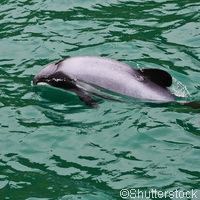Large Marine Protected Areas work for dolphins, study shows
New findings from an international team of ecologists have shown that Marine Protected Areas (MPAs) do actually work. Writing in the British Ecological Society's Journal of Applied Ecology, the team from Australia and New Zealand show that a marine sanctuary off the coast of Christchurch in New Zealand has significantly improved survival of Hector's dolphins - one of the rarest dolphins in the world. The study is based on 21 years of monitoring Banks Peninsula Marine Mammal Sanctuary, 1,170 km2 of sea off New Zealand's South Island. In 1988 the area was set aside to prevent the dolphins being killed by gillnet and trawl fisheries. In most areas of the world MPAs are recognised as an important way to conserve life-sustaining ecosystems and specific habitats for marine animals; the aim is to protect and preserve representative samples of marine biodiversity for the benefit of future generations. This marks them out from protected areas on land which are less about preventing immediate threats or looming extinction and more about precaution and the benefits to industry of preserving types of habitat. The findings are based on regular photo-identification surveys that were taken of Hector's dolphins, photographically capturing 462 reliably marked individuals, whose survival they studied. As Dr Liz Slooten from the University of Otago in New Zealand explains: 'We can identify individual dolphins from their battle scars - which range from small nicks out of the dorsal fin to major scarring following shark attacks. Estimating population changes in marine mammals is challenging, often requiring many years of research to produce data accurate enough to detect these kinds of biological changes.' As the team started taking these photographs two years before the MPA was opened, they were able to analyse the impact of the MPA on Hector's dolphins. The results showed that since the MPA was designated, the dolphins' survival rate has increased by 5.4%. Dr Slooten claims their study is the 'first empirical evidence that Marine Protected Areas are effective in protecting threatened marine mammals.' She also highlights that they need to be 'large enough in order to be effective.' Until now, there has been little if any empirical evidence to prove the effectiveness of MPAs, so measuring their impact is crucial to justify putting them in place. However, although survival has improved among the dolphins, the team warn it is not yet high enough to prevent the population from declining further. In the EU, the Marine Directive was adopted to prevent the decline of biodiversity caused by human activities. One way of achieving this aim is through the establishment of a network of MPAs, thus contributing to one of the key objectives of the Convention on Biological Diversity: the creation of a global network of marine protected areas.For more information, please visit:University of Otago:http://www.otago.ac.nz/
Countries
Australia, New Zealand



